“Four out of five people want to act sustainably. But in reality, only one in five actually does.” – Rikke Holm Petersen
Many people travel with sustainable intentions, but there is a wide gap between intention and action. How can destinations close that gap to help more visitors care for communities and the environment? While many places preach sustainability, few have found ways to make it stick, let alone easy and joyful. One city that has nailed it is often named among the most livable and green cities on Earth: Copenhagen.
In summer 2024, Wonderful Copenhagen quietly launched a bold solution. Through a four-week pilot called CopenPay, residents and visitors were rewarded for simple, climate-friendly actions. Did you travel by bike instead of by car? Pick up litter? Bring your own coffee cup? In return for good deeds like these, 26 tourism partners offered rewards like kayak tours, vegetarian meals, or ski time on CopenHill, the city’s waste-to-energy plant with a ski slope.
This episode of the Travel Beyond Podcast features Rikke Holm Petersen, Director of Marketing, Communication and Behaviour at Wonderful Copenhagen. She shares how a locally focused idea rooted in trust became a global example of behaviour change, and why this model could reshape how cities invite people to care.
“If you want people to change and do good, it needs to be fun and inspiring,” says Rikke. “So we went with the carrot, not the stick.”
The CopenPay concept is simple, but powerful. The program relied on Denmark’s strong culture of trust, rather than complex behaviour tracking. Instead, people scanned a QR code, pledged an action, and received a reward. If they cheated? That was on them. “But they’d already reflected,” Rikke explains. “And that was good enough for us.”
Originally aimed at residents and visitors already in the city, CopenPay quickly exceeded expectations during its four-week pilot project:
- 5,000+ participants
- 26 local partners
- 1,200 kg of trash collected
- 100% satisfaction rate
Even more remarkable? Over 100 destinations contacted Wonderful Copenhagen, eager to learn how to adapt the program in their own cities. “We’re not doing this to attract more tourists,” Rikke says. “It’s not about more. It’s about [doing] better.”
That philosophy is shaping the next chapter: CopenPay will return in May 2025, with even more impactful ways to care for the city and be rewarded.
Copenhagen is showing what’s possible when a destination invites people to care.
Not just about what they see, but where they are. And when doing good feels this rewarding, why wouldn’t you?
In this episode, you’ll learn:
- How a simple, trust-based system encouraged thousands to make sustainable choices in Copenhagen.
- Why traditional sustainability messaging often fails, and what works instead.
- What made CopenPay a surprise global success, and how other destinations are responding.
- How cities can create a lasting impact by aligning resident values with visitor behaviour.
Subscribe to Travel Beyond through Apple Podcasts, Spotify, or your favourite podcast player.
Show notes
- CopenPay: Learn more about Copenhagen’s trust-based program that rewards climate-friendly actions with cultural experiences.
- CopenHill: Explore CopenHill, the award-winning waste-to-energy plant that doubles as a ski slope and urban recreation space.
- Wonderful Copenhagen: Discover how the city’s destination marketing organization is redefining tourism through sustainability and local values.
Transcript
Rikke Holm Petersen: Four out of five really want to act sustainable, but reality is that only one in five is doing it. When we started out the project, we were like, how can we inspire people? And quickly we found out that we didn’t like the stick approach. If you want people to change and do good, it needs to be fun and inspiring. So we like the carrot approach instead.
David Archer: Welcome to Travel Beyond. I’m David Archer from Destination Think, recording from Haida Gwaii, the territory of the Haida Nation off the north coast of British Columbia in Canada. On this show, we look at travel’s role in making a better world, and we highlight leading destinations and changemakers. Our guests are taking local action that the world can learn from.
They’re helping to regenerate ecosystems, communities, and economies, and they’re often making positive change happen from the bottom up. Many of the voices we’ve highlighted are part of the Destination Think collective, which is a peer group of more than 20 ambitious, forward-thinking destinations working towards a better future for travel and the planet.
And one of our member destinations is the Danish capital, Copenhagen. This city has a reputation as one of the world’s greenest, and about a year ago on this podcast, we spoke with several community and tourism industry leaders about some of the significant and exciting innovations happening there. We learned, for example, about architecture and building using reclaimed materials, travel experiences designed with sustainability in mind, and about the city’s decades-long process to transform its harbour from a polluted waterway into what it is today, which is a very popular place to swim.
Since we spoke with them, the city has successfully launched and completed a summer pilot programme in 2024, designed to encourage visitors to adopt some greener habits and make a positive impact on the place they visit. That project is called CopenPay, and even though it was only advertised locally to those already on the ground, it received a lot of attention internationally too.
CopenPay’s premise is simple: do an eco-friendly deed and you’d be rewarded in the form of perks and free or discounted experiences offered by participating operators. And at a time when every sustainable action counts, it’s a meaningful project that has had a very positive start and holds huge potential for an even bigger impact on visitors, residents, and the environment.
Our guest today is Rikke Holm Petersen from Wonderful Copenhagen, and she’s here to tell us why CopenPay is such an important sustainability project in tourism for the city.
Rikke Holm Petersen: My name is Rikke Holm Petersen, and I work for Wonderful Copenhagen, and my title is Director of Marketing, Communication, and Behaviour.
David Archer: Fantastic. Now, I want to learn a little bit about the city as we get started. So, what is one thing that you always like to take your friends to do when they visit Copenhagen?
Rikke Holm Petersen: I would take them dipping in the harbour.
David Archer: Interesting.
Rikke Holm Petersen: No matter what time of the year they would come, so it would be a little bit chilly perhaps for some people that are used to dipping in the ocean when it’s warm. So that would be one thing.
David Archer: Is there quite a lot of space to do that in Copenhagen’s harbour?
Rikke Holm Petersen: Yes, there is, and we have a very clean harbour actually. We have 10 swimming zones because we also have transportation on the canal in the harbour. So we can’t dip anywhere. We need to stick to the zones.
David Archer: That sounds like a lot of fun. Do you have a favourite place to eat lunch in Copenhagen?
Rikke Holm Petersen: I’m actually more of a morning person. I really like breakfast instead.
David Archer: Tell me about breakfast.
Rikke Holm Petersen: We have some amazing places where they make perhaps the best bread in the world—sourdough bread. So that would be Anā, that’s one place. We have some amazing bakers and they are located in different places in really cosy areas of Copenhagen, so I love doing that, getting a proper breakfast.
David Archer: That’s great. Baking is one of my passions here as well. I like making bagels myself, but wandering the city and searching for good baking is always something I like doing too. I want to talk about some of the things that make Copenhagen unique. You mentioned cleaning up the harbour, and we’ve talked a little bit about that on the Travel Beyond podcast as well. We spoke with former Mayor Mikkelsen of Copenhagen, for example, about that. It seems like a good example of a large project that the city can be proud of. Is there anything else like that about Copenhagen that makes the city special to you?
Rikke Holm Petersen: For sure, we have so many bike lanes. It’s incredible. I think it’s almost 400 kilometers of bike lanes. That’s an amazing thing as well. We have many spaces, so we talk about them here in Copenhagen—livability meets sustainability. So we have many spots, many places where we can be outside. The way of living is really nice. So we’d rather go on a bike than take our car.
David Archer: So the population is fairly active, would you say?
Rikke Holm Petersen: Yeah.
David Archer: What are some of the other things that might draw people to live in Copenhagen?
Rikke Holm Petersen: We have a very relaxed way of living as well. I would say not taking things too seriously in the way we are and in the way we interact with each other as well. We might seem a little bit cold when you come here, but we are actually really warm and have a relaxed way of being and behaving and interacting with one another.
It’s also a very diverse city, so we like that every person can come in the form they are, no matter who they are. It’s also really democratic. So democracy is really important to us as well, and equity also. And I would say another really nice thing about Copenhageners is that we are quite innovative in what we do and how we think about the world. We want to change many things and try a little bit.
David Archer: That spirit of trying out new ideas is something that I’ve noticed as well. Do you have a favourite example of that?
Rikke Holm Petersen: One of the things, for instance—we have a heating plant in Copenhagen, and our architecture is of course extremely innovative as well in Copenhagen. The heating plant is a really good example of that, transforming the heating plant into a ski slope. So on the rooftop you can actually ski down a slope and you can do that all year round. So that would be an innovative way of thinking—you have an old building and you’re thinking, what can we do with that? Okay, let’s make a ski slope so we can ski all year round. And it’s also sustainable.
David Archer: Is that the CopenHill?
Rikke Holm Petersen: Yeah, exactly.
David Archer: That looks incredible. And you mentioned democracy as well, which is an interesting one. Can you talk a little bit about that and what that means in Copenhagen?
Rikke Holm Petersen: It means that we don’t like hierarchy in general. We want everyone to be heard and all want to contribute to the way we live. So to share, and it’s just a way of living that we’re all equal, again, as I said, and we all have good ideas and opinions, and also government, the way we have our policy making and so on here as well. So it’s really democratic in all kinds of ways.
David Archer: How do you think some of these values might affect the travel experience, whether it’s democracy or equality or trying new ideas and that sort of thing?
Rikke Holm Petersen: The travel experience for sure is that we are really accessible. I mean, of course we have flights here, but it’s accessible—a way of living. It’s easygoing, as I said before. We want to hear and learn as well, and tell and sort of grow bigger together.
David Archer: So it’s easy for people to kind of find a place for them and get around the city as well. Is that part of it?
Rikke Holm Petersen: That’s part of it. And again, open spaces, welcoming spaces as well. You might see a lot of people on bikes going in a hurry to a place, but again, open spaces, open-minded, warm, and again, relaxed. I would use that word again—easygoing.
David Archer: And so thinking about sustainability, like I mentioned off the top, what do you think would draw a traveller who is a little bit sustainability-minded or conscious of how they travel? What do you think might draw them to Copenhagen or what do you think they might be impressed with when they visit?
Rikke Holm Petersen: For sure, architecture—that’s one thing. Amazing architecture here that is really sustainable in many ways. So that would be one thing. And again, as I started out with, one of my favourite things I would invite people to do is dip in our harbour because we have clean water here. So they would also be impressed by a way of living. Again, it’s like sustainability is ingrained in everything we do, also our food scene as well. So many years, or 20 years ago, we started the New Nordic way of gastronomy, for instance, using locally produced products and rethinking the whole dinner, eating thing, meal thing. So I think they would be impressed in many ways.
So again, livability meets sustainability. That is what they would experience in many ways—tiny things all around. Some of them you might be able to see, what’s really clear, when people are biking, of course, or a building, but also just a normal way of living. And again, I said, for instance, here in Copenhagen, the preferred way of going to school—that’s by bike. It’s not by car, for instance. Preferred way of going to work is by bike, not by car. So you would see it and feel it.
David Archer: It seems like that might provide a lot more opportunities for interaction between residents and visitors, if everyone is out in the open a little bit more on bicycles rather than visiting a North American city, for example, where cars are quite predominant.
Rikke Holm Petersen: Yeah, for sure.
David Archer: Let’s talk a little bit about what visitors are doing when they come to Copenhagen. I want to talk a little bit about the CopenPay project, which launched in 2024 in the summer. But first, maybe let’s talk a little bit about visitor behaviour and particularly green actions or climate-positive or climate-friendly ways of travelling. Can you talk a little bit about why that’s important?
Rikke Holm Petersen: It’s important because tourism accounts for 8% of the world’s CO2 emissions. So that’s why it’s important. Tourism in itself—in order to experience other cities, you have to travel. And travel is polluting in some ways, worse than other ways. So that’s one thing. And just in general, I would also say we have a huge problem. We have a huge worldwide problem and we need to do anything we can do in order to help the world become a better place or better destination as well. And that requires thinking 360 degrees around what you’re doing, not even when you’re travelling, but also when you’re living and how you transport yourself when you are in places, for instance, what you eat—if you eat red meat, for instance. So in many ways, we can do a lot and we need to start.
David Archer: Absolutely. It sounds like every little bit counts, kind of the idea. You mentioned the architecture earlier as a sustainability leadership example. We’ve talked a little bit about that on the Travel Beyond podcast as well with Anders Lier, one of the architects in the city. So there’s some good examples there. Can you tell me a little about the pilot programme that you launched last summer and CopenPay and how that came to be?
Rikke Holm Petersen: So the programme, or the initiative, is called CopenPay, and just very briefly, we invited tourists, also locals actually, to take part in our initiative. So we invited them to make climate-friendly actions and for that they were given rewards. And the rewards were Copenhagen attractions. And one of the reasons why we did the project, or the initiative, or why we started out with it, is that one of our ambitions in our new strategy is accelerating the green transition, both locally and globally. That’s why we did it. And again, moving a little bit further down in one of our sub goals, that is to inspire for more lasting, sustainable habits or practices all over, wherever we are. So that’s why we did it.
And then we came across a survey by Kantar. We made a survey where we actually saw that four out of five really want to act sustainable, but reality is that only one in five is doing it.
David Archer: I have heard stats like that as well. I had another guest recently call it the say-do gap—the difference between what we say we want and what we’re doing in the end. I think that is a big challenge in travel and in other parts of life too. Did you learn anything about the say-do gap or that conflict as you worked on this project?
Rikke Holm Petersen: Yeah, because I mean, you have to think, how can you reduce or how can you bridge the gap? Of course. What does it take? So we had many talks about that. But when we started out the project, we were like, how can we inspire people? And quickly we found out that we didn’t like the stick approach. If you want people to change and do good, it needs to be fun and inspiring. So we like the carrot approach instead.
I think that is probably one of the biggest learnings of the whole project—how do you get people to do good in a fun way where you sort of play it in because they really wanted to? So it was obvious what they wanted to do. Perhaps they don’t—what stops them from doing that? That’s perhaps because they don’t know how to do good. They might find it difficult. Where do I start? And if I do this, is that enough? So all these tiny things prevent people from doing it. So I think that’s the biggest learning—sort of crushing that, like figuring out how you can make it easy and accessible.
And I talked to one of the first journalists, I talked to really many journalists throughout the whole summer about this project. There was a journalist from BBC who said to me, it’s amazing because you can do a sustainable action within a minute. And that was the thing. So you were invited—we had a QR code. You could scan it, you could see what kind of action I can do, and then I was given a reward. And boom. So it was so easy. And I think that’s the real secret. It’s not the secret, but that’s, I think, the key.
David Archer: Absolutely. That’s so helpful just to make it seamless and easy. So, can you tell me a little about what the visitors or the people who participated—what kinds of actions were they doing and then what were they getting as a result?
Rikke Holm Petersen: A lot of biking. So they were asked either to bike or walk or take sustainable transportation. Our metro system, for instance, is sustainable. So these were some of them—the way you moved around in the destination. They were also being invited to pick up litter in many places. So, for instance, if I collected plastic waste, I was being granted access or I could be part of a workshop where I could create, turn my plastic into some beautiful art.
One of our museums—we have CopenHill, for instance. So if you bike or walk out there, you would get additional ski time so you could ski down on the rooftop. You got more time. What else? We had so many different things. In the canals as well, you could go on a kayak and you could collect waste. That was sort of both action and reward in the same. We also had GoBoat. If you rent an electrical boat and go around and see the places and collect waste, you got that for free as well, but you could tour around and see Copenhagen. So really many differences. We had plogging as well. Plogging is a fun thing and a thing I don’t know if you know about.
David Archer: No, I don’t.
Rikke Holm Petersen: All the rest of the world—you run or you walk around and you collect waste. And then they were being rewarded with some really nice Danish breakfast. So many different things, I would say.
David Archer: That all sounds well worth it too for a visitor. They seem like pretty simple actions.
Rikke Holm Petersen: It was, yeah. Simple actions for sure. We also have some amazing things. So we have a beautiful museum north of Copenhagen, Karen Blixen Museum, and she was a famous author. So you were invited to work in the garden, learn a little bit about the flowers and the garden, and then you were given a special tour. We also have a really nice place called ØsterGRO where they grow all kinds of vegetables. So you could work in the garden and you were being invited to have a vegetarian lunch there as well. So different things.
David Archer: That’s a little bit more involved. That sounds like an agritourism experience itself. Right. So this all took place through an app, or how did you know that people really did the things that they did, I guess is what I’m saying?
Rikke Holm Petersen: So they had to show up and in some of the cases they would show proof. So I’ve been biking or I’ve been walking and again, a transportation ticket. And then they were being given their award or reward, sorry. Of course, if they worked in the garden, of course it was obvious. You could see people actually contributed to it. What we didn’t do was that we weren’t that strict. In Copenhagen, or in Denmark, the way we act and believe and behave is that we’re trust-based in everything we do. We trust people. So if you wanted to cheat, then we were like, well, I mean, you’ve seen it obviously. So we’ve made them conscious of some choices. And that’s the whole idea of why we did it. And if you cheated, you cheated yourself. But again, you’ve had some kind of reflection and that was good enough for us.
And actually I met with an amazing tech guy yesterday, and he said, you don’t need an app. You don’t need a system for this. This is genius because you are doing it, as you said, seamlessly. It’s so easy. You have a system for it. It’s culturally based because we are trust-based in the way we are in Denmark. So it was also based on the way we are and what we believe in.
So we had a website, of course, where people could go in and they could see the list of what kind of actions should I do and what kind of reward will I be given. So there was a whole list of that. I’m not sure you could do that in any kind of country because you need to be trust-based in some ways. You need to—it needs to be reflected in the way you are, the way your culture is.
David Archer: That’s really important. And it sounds like a very healthy way to think about doing sustainable actions anyway, right? Like if you’re travelling and are concerned enough to pick up trash in a foreign city, you’re probably feeling that sense of consciousness anyway. So I think that’s great. Can you tell me a little bit about the results of the programme? How long did it run, how many people participated, and attractions?
Rikke Holm Petersen: So it ran for four weeks and we had 26 partners contributing. We couldn’t do—the initiative or the project can’t be done without any partners in it because that’s the whole idea. So for four weeks, 26 partners, we had 76,000 people coming by our webpage. We had over 5,000 participating in CopenPay. And again, we didn’t set a goal for that because that’s a bit tricky because each partner had different offerings. So for instance, some would say I do it once a week for an hour. I offer—you can go on a GoBoat for instance this day, but not every day. So we had certain time slots and also in some of the experiences or the rewards, they had limited amounts of seats or of how many could actually participate in it. So we didn’t set that. So we came to above 5,000, which we were happy about.
And of course we also know more about the results. We looked into—so we had Donkey Republic, that’s a bicycle rental. A lot of the reward was also that. And they saw an increase, a 29% increase in cycling, which was one indicator as well. The trash we collected, of course, weighed 1,200 kilos of waste.
And then we did interview 100 people who participated or who were part of it, or weren’t. So 50 of each. And the ones who were part of it—we asked them why they did it and if they liked it and if they would recommend it to others. So we had 100% satisfaction. So they love the concept and 98% would recommend it to others. And then, again, we also talked to our partners, of course, hearing if they were happy about being or participating in it. And again, all of them really liked it and wanted to join this year as well.
David Archer: I was just going to ask, is CopenPay coming back in 2025 and what can travellers look forward to?
Rikke Holm Petersen: A lot. Many good things actually. This year, CopenPay will be even bigger.
David Archer: That’s a lot to look forward to. Is there anything else that you’d like travellers to know about coming to Copenhagen this summer?
Rikke Holm Petersen: Come take part in it and spread the good word because we are not doing it to attract people or have more people come, but rather that the people who take part in it will spread the word and help us.
David Archer: That’s good advice and it’s a good place to end our conversation today. So I want to thank you so much, Rikke, for being with us on the show today.
Rikke Holm Petersen: Thank you. Thank you for inviting me.
David Archer: This has been Travel Beyond, presented by Destination Think, and that was Rikke Holm Petersen from Wonderful Copenhagen. For more resources and show notes, visit our website at destinationthink.com. This episode was hosted, produced, and had the music composed by me, David Archer. Sara Raymond de Booy, my co-producer, Lindsay Payne, and Cory Price provided production support.
If you like what you’re hearing, please take a moment to give us a five-star rating wherever you’re listening. It helps more people find us. Thanks for being here, and we’ll be back with more next week.
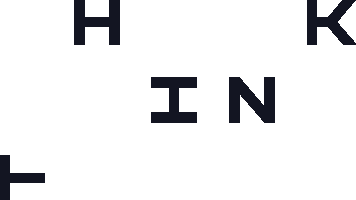

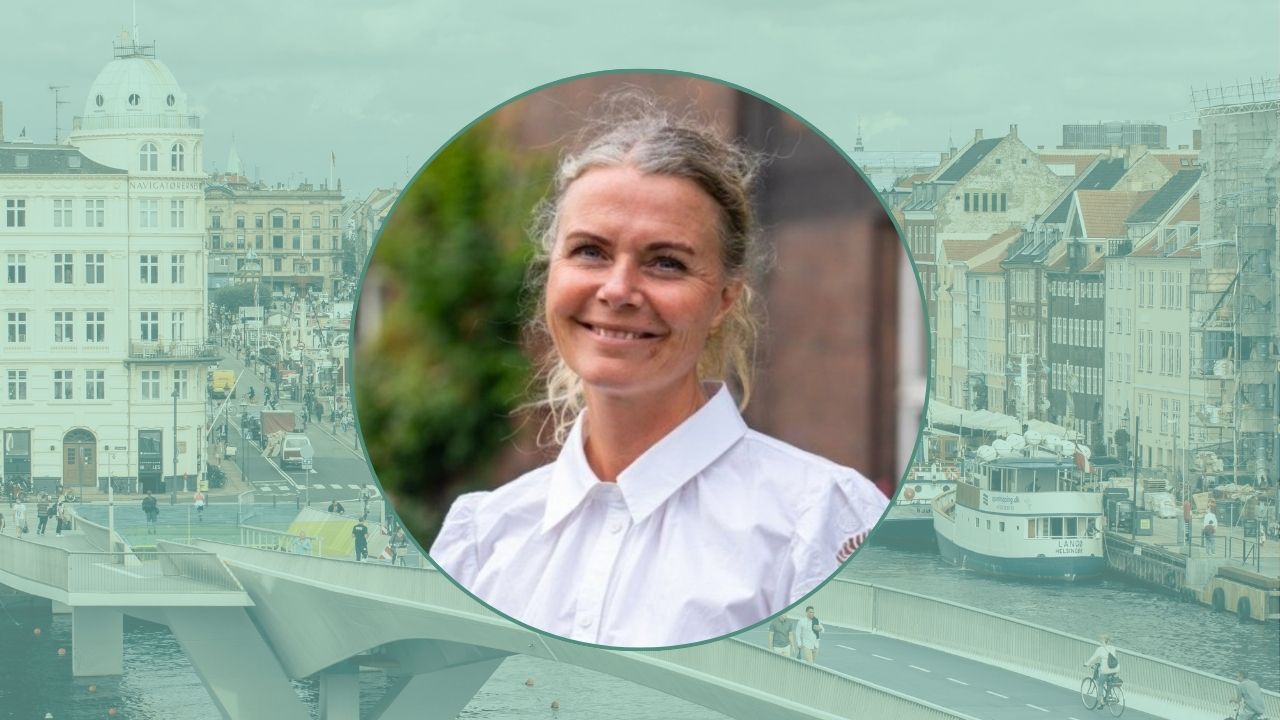
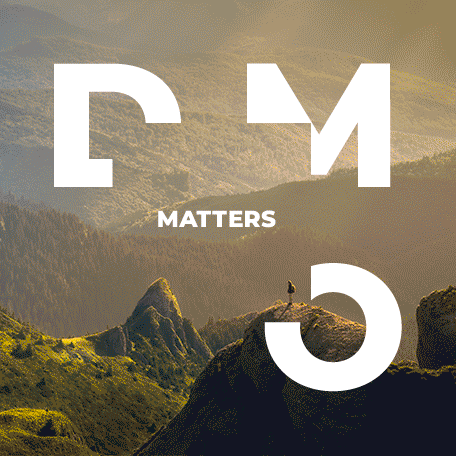

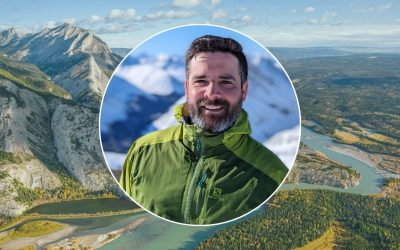
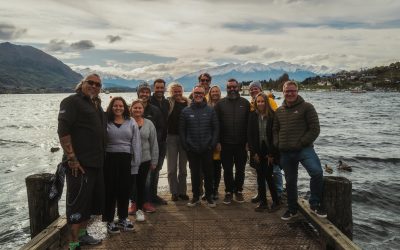
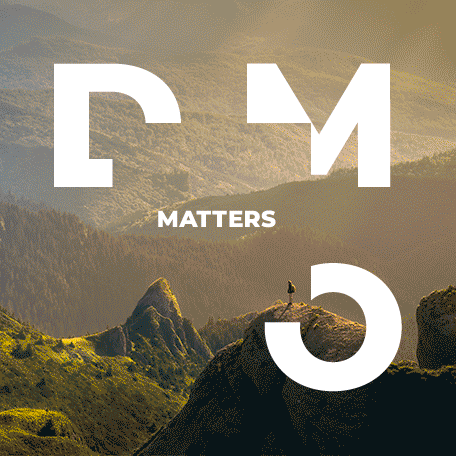

0 Comments